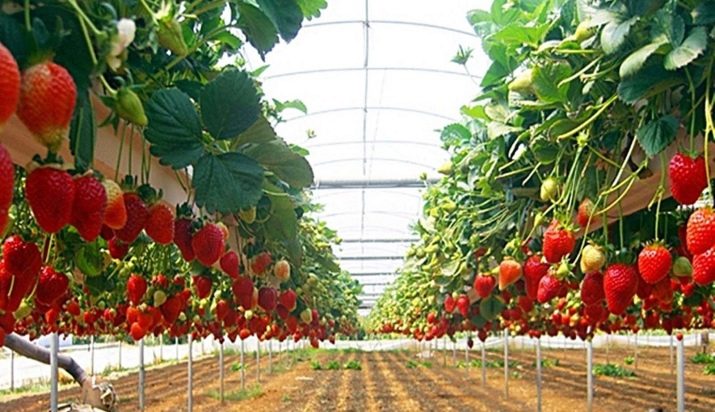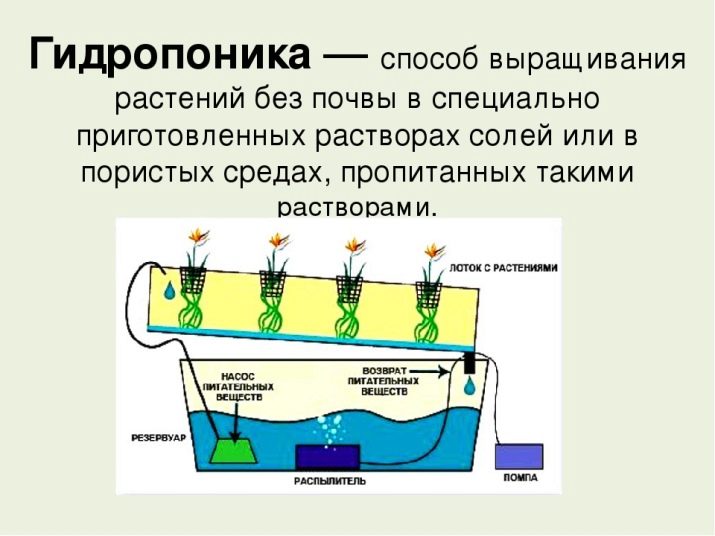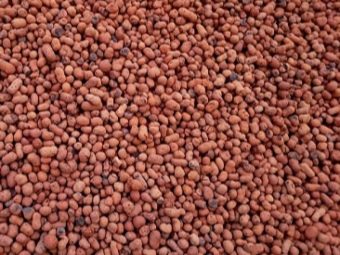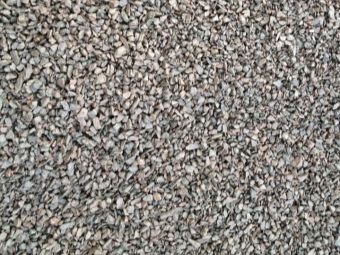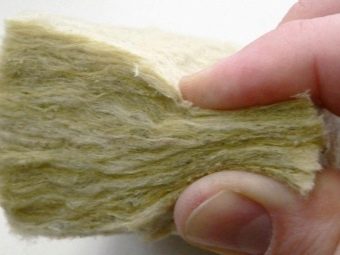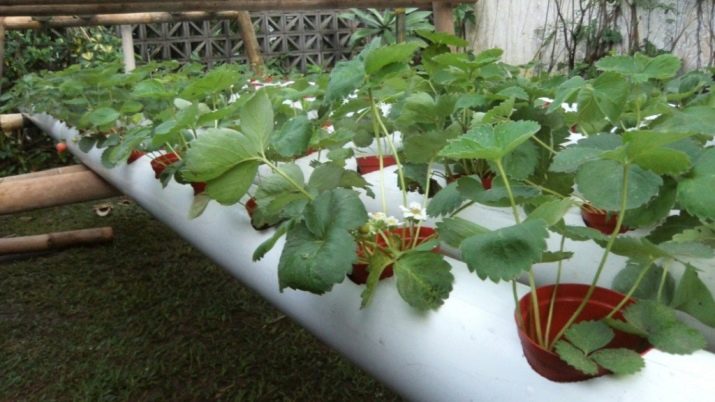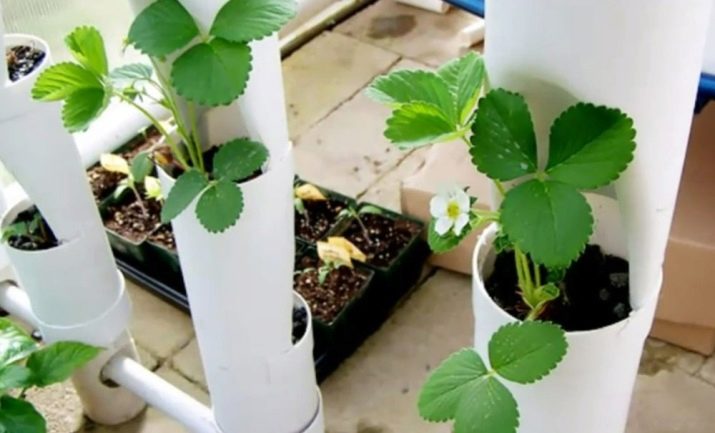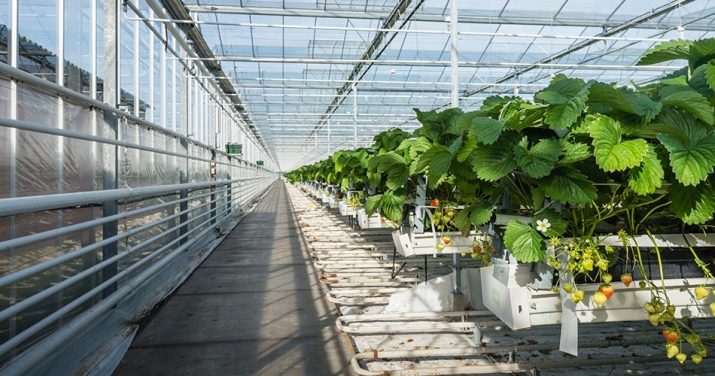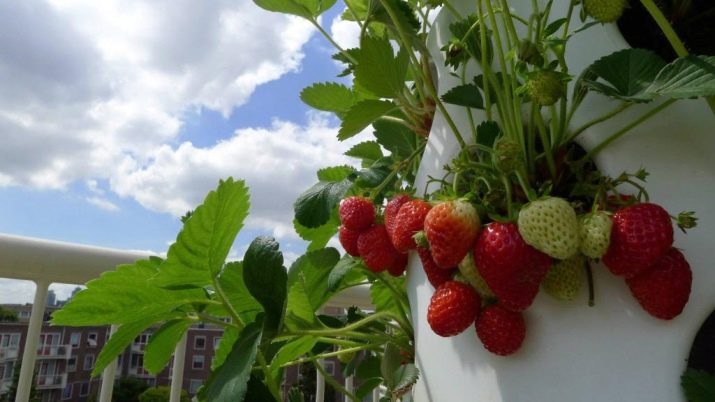Strawberries in hydroponics: description, pros and cons of the method of growing
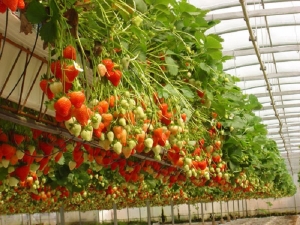
Even with the successful cultivation of strawberries, its remontant varieties are capable of producing several harvests per season. But autumn comes, and the vital activity of the culture freezes until the next season. The life cycle of the plant resumes in spring, and only after some time, depending on whether it is a berry, early or late, you can wait for the harvest. In hydroponics, fruiting can be year-round without loss of crop quality. Consider what this technology is.
Features of the technique
Hydroponic method of cultivation in our country is practiced relatively recently, but every year he has a lot of adherents, because it allows you to get great harvests, minimizing the cost of maintaining the culture.
The principle of this cultivation method is that strawberries grow without the usual soil, getting the necessary nutrition from a specially prepared solution. That is, the roots of the plant are not located in the ground, but in a certain environment, which has a porous structure, which is capable of absorbing liquid and well passing air. Such an artificial substrate is simultaneously a support for the root system and the plant itself.
The main materials for it are:
- expanded clay pellets, it is best if they are irregularly shaped;
- gravel, crushed stone with a size of fractions from 2 to 5 mm;
- crumb of sphagnum peat, with an average level of decomposition;
- coconut fiber (bast);
- Mineral wool is an inexpensive, lightweight material that also contains some zinc, iron, and copper that can be absorbed by the roots of a crop.
Through the mixture prepared from these components to the plant should be fed. It is usually carried out with the use of flooding in certain periods by means of drip irrigation by creating artificial fog, as well as lowering the root system into the nutrient fluid completely. The latter method is rarely used for remontant varieties, as it can lead to rotting of strawberry roots.
Most gardeners came to the conclusion that at home it is more convenient to grow berries on a high-quality nutritional layer when the solution circulates at the bottom of the hydroponic substrate - so the roots gradually grow, reach the necessary substances and provide them with a plant.
Such equipment for growing is quite realistic to make and install with your own hands, creating indoors a favorable climate for plants.
Advantages and disadvantages
Having some idea of this method of cultivation, it is necessary to understand that a correctly prepared nutrient mixture is of great importance, as well as the creation of special climatic conditions for abundant fruiting.
However, immediately it is worth considering all the positive and negative aspects of this technology and system.
The main advantages:
- first of all, for the growth, flowering and fruiting of the plant, a minimum supply of water is needed, which is evaporated by the plant, so it does not go anywhere;
- the plant can give all its strength to fruiting, so it does not need to extract nutrients from the soil;
- weeding, loosening and mulching in this case are absent;
- since weeds cannot be a priori with such a system, it is not necessary to spend money on herbicides;
- strawberries grown by this method are more viable than planted on beds;
- in their own way, the use of fertilizers is economical - in their natural environment most of them go to the soil, therefore, the amount of mineral additives can be regulated.
As a result of all these advantages, the harvest also increases. Strawberries in hydroponics are healthy, strong plants that produce many high-quality, tasty fruits. Harvesting has a certain convenience, when there is no need to bend down behind the berry - the system is installed on an elevation.
Of course, this technology also has its drawbacks.
- Unlike natural soil, which can change the content of acid and alkali over time, the artificially created substrate does not possess such properties, and any mistake in its preparation can cause the appearance of pathogens. For example, algae and microorganisms settle very often on mineral wool, therefore irrigation is important so that salts do not precipitate on its surface, and at the same time drain up to 25%.
- But also an important factor and at the same time a disadvantage, it is considered constant control over the temperature - it must be kept steadily warm in the root zone, and an increase in indicators may provoke their death. Perhaps the gardener is not faced with such a problem in natural conditions.
A significant disadvantage is that the installation of equipment by professionals is not cheap, which is why many gardeners try to install the system themselves. But for this you need, indeed, a good understanding of the subject, and without help will be difficult for amateur to get a good result. In addition, hydroponics requires daily expenses for electricity.
Installation of a horizontal system
A person who is a little bit versed in technology can create a hydroponic vegetable garden in an apartment or house, experts advise using a drip irrigation system for this.
Culture can grow both horizontally and vertically - it all depends on the area and the height of the room.
The arrangement of the horizontal system is as follows:
- large-sized PVC pipes with a circular cross-section are taken and installed on wooden racks one above the other;
- they cut holes for glasses, pots with seedlings with a diameter of 10 cm 25 cm from each other;
- profiles must be sealed with plugs and interconnected;
- the substrate may be mineral wool, peat mixture or expanded clay;
- pots are installed in the holes;
- Under the batteries place the tank with the nutrient solution, it is equipped with a pump.
The circulation of air and moisture will be carried out by means of a perforated hose, into which tubes are fed, supplying food to each pot with strawberries. This is the simplest option, suitable for those who first engaged in this technology of cultivation.
Vertical system
The main feature of the installation of vertical equipment and, in fact, the associated complexity is ensuring the lifting of the mineral solution.
For work, you will need a large PVC pipe with a plug for closing, a thick hose, a pump, a pneumatic or electric drill, and sealing gaskets.
The order of work is as follows:
- holes are cut out along the marked pipe - the first one should be located at a height of 20 cm from the floor surface, then the seats are cut at intervals of 25 cm;
- holes for irrigation are also made in the hose - they must be located opposite the seedlings' location; they must be wrapped with nylon or sackcloth;
- It is important that the hose is placed exactly in the middle of the pipe, drainage material is placed on the bottom, and a hydroponic substrate is placed on it.
The room in which they equip the system must necessarily be equipped with uninterrupted heating. It is necessary to fulfill other requirements for abundant flowering and formation of strawberry ovaries.
Cultivation conditions
Based on the fact that culture prefers an abundance of light, it needs to provide constant illumination. If you place the installation in a room that overlooks the sunny side, it will reduce energy costs, because you still cannot do without artificial lighting. In the winter, you will need powerful lighting devices that should work about 12 hours a day, it is better if the lighting will be present for at least 18 hours.
A necessary requirement is to maintain humidity at 70%, as in conditions of drier air, the growth of strawberry bushes slows down and stops, higher rates can cause the appearance of fungus and mold.
The plant loves heat, so the optimum temperature for its active growth is considered to be +23.25 degrees during the day, at night it can be reduced to +18 degrees. If the temperature regime is too high and reaches +30.35 degrees, this leads to the death of the root system.
For the cultivation of particular importance is the preparation of an aqueous mixture of substances necessary for the berries. The best mineral nutrient solution necessarily contains components such as phosphorus, potassium and nitrogen, in addition, it must contain sulfur, calcium, magnesium, zinc, molybdenum, boron and iron.
It is important to determine the level of salt, which for strawberries should be low and be 1.2-1.5 according to EU measurements. To determine the acidity, you can use a special test kit Ph, with 5, 5-6, 8 - normal values for culture. All nutrients are diluted only in distilled water.
Fans can be advised on this issue to seek help from specialists or buy a ready-made tool, because the wrong solution is often leads to insufficient growth, and sometimes the death of strawberry bushes.
Those who first decided to do this interesting, but not an easy task, it will be useful to know that there are varieties specially designed for such cultivation. The best of them are “Fresco”, “Olbia”, “Gigantella”, “Douglas”, “Bogota”, “Yellow Miracle”. A nice bonus to the abundant harvest in hydroponics is the large size of the berries, which pleases the gardener.
To learn how to grow strawberries hydroponically in a greenhouse, see the next video.

